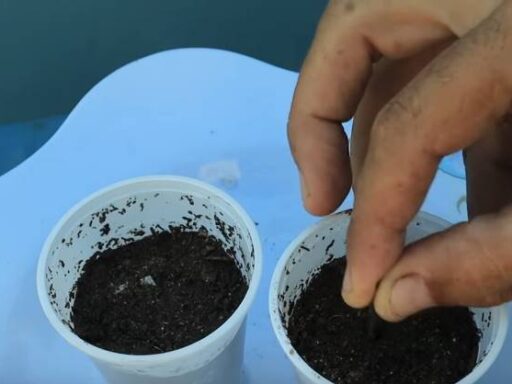Pruning and fertilizing are essential techniques to ensure the healthy growth and productivity of fruit trees. This article outlines the visible results of vertical pruning and organic fertilization after two weeks of application. The focus is on the benefits of pruning in managing tree growth and improving yield, with examples from guava, peach, and pomegranate trees.
Vertical Pruning: A Key to Controlled Tree Growth
Vertical pruning is a method used to manage the height and structure of trees, encouraging healthier, more controlled growth. In the case of the guava tree, which had grown nearly 4 meters high, a vertical pruning session was done to control its upward growth. This involved cutting the weak branches and removing yellow leaves. Similar steps were taken for peach and pomegranate trees. By cutting the top parts of the trees and weak branches, we aimed to improve air circulation and light exposure for the remaining healthy branches.
After two weeks, the results of pruning were evident. For the peach tree, new side branches appeared, showcasing strong and healthy growth. These branches were not just leaves but full branches, indicating that the tree was now entering a training stage, where the plant is being shaped into a healthy, fruit-bearing tree.
Results After Two Weeks: Strong Branch Growth
The peach tree, in particular, showed clear signs of success. New branches developed from the areas that were pruned, each branch showing clear, robust growth. These branches are now part of the tree’s healthy development, forming the main structure that will support fruit production. The tree’s central growth tip is visible and actively growing upward. If you prefer to control its upward growth, you can prune it again, but it’s important to leave some space for further development.
Similarly, the pomegranate tree displayed impressive root growth. Although tomato plants were growing in the same pot, they did not pose a significant threat, as they would only live for about two months. The pomegranate tree continued to develop strong roots, which is essential for sustaining future growth.
The Importance of Regular Pruning
The pomegranate tree, which was pruned about six months ago, had shown positive results after each session. During the first pruning, it grew only one main branch. However, after the second pruning, three or four new branches sprouted. The tree continued to grow stronger with each subsequent pruning.
The growth pattern of the main stem was also noteworthy. Initially, after the first pruning, a single branch grew upwards. After further pruning, several new branches appeared, contributing to the overall health and shape of the tree. These branches will eventually produce fruit, adding to the tree’s productivity.
Addressing Weak Growth
There were some weak growths at the base of the trees, particularly in the roots. These weak areas did not complete their development and resulted in the formation of a single small branch. However, this is a natural process, as not every part of the tree will grow equally strong.
In contrast, the smaller guava tree showed encouraging results. After pruning, it produced three strong branches, forming a solid foundation for future growth. Each branch exhibited visible signs of healthy development.
Larger Guava Trees and Pomegranate Growth

For larger guava trees, the impact of pruning was less immediate but still noticeable. Due to the size of the tree, it took three weeks for the first signs of new growth to appear. New side shoots began to emerge, showing the tree’s readiness for further growth. These side shoots are crucial for future fruit production.
Pomegranate trees, when pruned and fertilized correctly, show similar signs of growth. Although the growth may slow initially due to the size of the tree, it eventually catches up, leading to healthy side growth.
Effective Fertilization Methods
Fertilization played a critical role in these results. Nitrogen-rich fertilizers, such as rice and beet fertilizers, proved to be excellent choices for boosting tree growth. Additionally, yeast-based fertilizers were highly effective in encouraging side growth. Compost tea or fish fertilizers were used to provide essential nutrients to the trees, resulting in visible improvements.
Protecting Trees from Pests
At this stage, it’s essential to protect the trees from pests. Spraying a natural pesticide every five days is recommended to keep pests like aphids and flies away. While flies may not pose a significant threat yet, aphids can severely affect plant health. Taking preventive measures will ensure the trees remain healthy and continue to grow strong.
Conclusion
In conclusion, vertical pruning and organic fertilization can significantly improve the growth and productivity of fruit trees. After two weeks, visible results were seen in the healthy development of new branches in guava, peach, and pomegranate trees. Regular pruning and the right fertilization techniques are key to ensuring the long-term health and productivity of fruit trees. Make sure to keep pests under control and provide proper care, and your fruit trees will thrive.




